Mary Lattimore is an artist I knew was special before I even had the chance to press play. Stumbling upon the avant-harpist’s Spotify page a few winters ago, I immediately garnered that Lattimore’s neoclassical music contained perplexing multitudes. Gracefully tottering between the traditional and the cutting edge, Mary Lattimore’s latest record, SILVER LADDERS, is one of 2020’s most simultaneously peaceful and eerie records. I had the pleasure of talking to Mary about the influence Los Angeles has on her verdant music, her work with Slowdive’s Neil Halstead, and the artists that inspire her.
I’ve spent some time with SILVER LADDERS over the past few days, and I must say it’s an absolutely stunning record. It’s also the darkest music I’ve heard from you since you since SLANT OF LIGHT. The tracks “Til A Mermaid Drags You Under” and “Chop on the Climbout” have especially noisy and dissonant tendencies that feel more fitting for the current human condition than anything on HUNDREDS OF DAYS or NEW RAIN DUETS. Did this record come to life as a result of the quarantine, and if not what inspired the choice to employ a darker sonic palette?
Mary Lattimore: Thank you so much for listening and I’m really glad you like the record. SILVER LADDERS was recorded before the pandemic and quarantine, in January of 2020. Although maybe some of my earlier songs might not sound as dissonant or dark on the recordings, I like the freedom in the live set to experiment with moods and morph the live songs into darker or lighter vibes, so maybe this sonic palette is more akin to live sets. Maybe there was some premonition there too.
I’ve read that you prefer to record your albums alone, but your last two albums have been collaborations with ‘90s indie rock veterans. Between Mac McCaughan’s work with Seam and Neil Halstead’s work with Slowdive, both artists you’ve recently recorded with have put out a very similar type of dreary, downtempo guitar music throughout their respective careers. I’m wondering if your choice of collaborators was intentional or if it was just happenstance. Are your recent collaborative albums part of an ongoing series, or can your audience expect your upcoming work to once again be solo?
ML: I’ve actually never heard Seam and I know Mac from listening to Superchunk and Portastatic and from working for him as an intern at Merge. I think it’s happenstance. I chose Neil to produce this record because I am a big fan of his ear and his music and thought it’d be interesting to combine his music taste with my harp sounds. The collaboration with me and Mac or me and Meg Baird or Jeff Zeigler has felt really different in that those were intentionally duo records, where we really improvised together and assembled it all. SILVER LADDERS was collaborative, but at the same time I feel like I had the final say with the parts, so it felt less like a duo project. We expanded the scraps of songs and improvisations that I’d already started. The audience can certainly expect more of me holed up somewhere weird and recording myself, more of Neil and I playing music together in some capacity—I hope!—and more of me collaborating with people in a big mish-mash of unpredictability.
You mention you interned at Merge. I’m curious about your industry background. Did you work or intern anywhere else in the music industry? How did that impact your career as a musician and artist?
ML: No, I was assistant music director and music director at a college radio station, WRUR in Rochester. That’s how I interned at Merge for the summer. Not sure if it really affected my career as a musician except I knew that I liked the behind the scenes and just the life around music, hearing a bunch of stuff in advance, bringing it to people even as an intern when delivering the mail.
Although you use the Line 6 DL4, for the most part from what I’ve read and the performance videos I’ve watched, it seems like technology isn’t a huge part of your process as a musician. Working with Halstead, a shoegaze musician whose work has always felt driven by super precise tones, what was it like working with a musician who heavily employs electronics? What were the benefits? What were the challenges?
ML: Yes, I don’t use a lot of technology, my brain doesn’t work that way, but lately I’ve been experimenting with some new pedals and sounds that are less harp-like. But in a live situation, the seven harp pedals and 47 strings alone are a lot to manipulate, so I try to keep it not too technology-centric. On the record, Neil didn’t really tell me what he was doing in detail, just played beautiful unreal guitar on some tracks, added extra shimmer when I described what I was hearing in my mind—super glittery saturated layers of harp. Sometimes I value the mystery and a little musical willful ignorance more than knowing exactly what someone is doing to make that sound. There are times when I want to dig deeper and find out exactly the recipe, but somehow I just got swept up in the sound rather than in the making of the sound this time.
Your music is very resplendent, lush, and feels traditional in many ways, even with its avant-garde sensibilities, but Los Angeles, your hometown, often feels sprawling, brutalist, and hyper-futuristic. As a fellow Angeleno, I was shocked to find out that we live in the same place. Without context I imagined you making music in some kind of otherworldly Mediterranean town. I’m curious what impact Los Angeles has on your music, and the influence that life in an extremely modern environment has on someone who plays a classical instrument?
ML: I actually just moved to Los Angeles three-and-a-half years ago, so I’m still fairly new. I’ve also been on tour a majority of that time until this year, so I’m getting to know LA bit by bit, but it still is very fresh and exciting to me. It’s a modern city but also has so much history, so many historical buildings and feels like a very romantic place. There’s also so much nature. Coming from Philly where you had to drive a bit to get to a hike, the nature is a big part of the attraction to living here, and flowers are blooming all year long. It’s also such a horizontal city, with small houses instead of big apartment buildings, and I think that’s influenced my life a lot with my giant instrument—LESS STAIRS HERE.
When I approach an instrumental work, the first thing I pay attention to before hitting play is the album art and your album art in particular feels important to the music. HUNDREDS OF DAYS had that ornate and whimsical painting by Becky Suss, whereas NEW RAIN DUETS featured hyper-real nature photography. SILVER LADDERS’ cover is once again a painting, and while it is stylistically similar to HUNDREDS OF DAYS, there is a newfound otherworldliness and surreality to it. How do you develop your album art? Are your visual components a product of your records, or do those collaborations come to life separately from the music?
ML: The art is separate from the music, but I have had the fortune of being able to use painter Becky Suss’ work for the covers of THE WITHDRAWING ROOM, AT THE DAM, SLANT OF LIGHT, HUNDREDS OF DAYS, and now SILVER LADDERS. Her work feels like it’s connected to my work and we are friends from the Philadelphia days (you can check out her recent work here). This painting was from the book Cheaper by the Dozen from 1948. There’s a lighthouse that the kids play in and Becky painted the interior from her imagination using descriptions from the book. It’s a perfect painting.
I read in a Tiny Mix Tapes interview that you get compared a lot to Joanna Newsom, which makes a lot of sense because you’re probably the two most notable harpists that exist in the indie realm today. But I never really drew that comparison myself. Your music has always called to mind 20th Century jazz harpists like Dorothy Ashby and Alice Coltrane. I saw another interview where you said your mother is a harpist, and it seems to be an instrument you grew up around, but the intersection of ambient, indie rock, and neoclassical music your records exist in feels truly singular. I’m curious who inspires you to play harp, and who some of your favorite artists are in general?
ML: Thanks! My mom does inspire me. I also listen to a lot of non-harpists and really love Brian Eno, the Cure, bands like Harmonia and Cluster and artists like William Basinski, Harold Budd, Julianna Barwick, and Liz Harris. I love Dorothy Ashby and Alice Coltrane and Joanna too, and some other harpists I feel are kindred spirits are Brandi Younger, Serafina Steer, Nailah Hunter, Rhodri Davies, Zeena Parkins, Shelley Burgon, Cassie Watson, PG Six, Jess Garland, Jesse Sparhawk, Carol Robbins, Ahya Simone, Low Leaf, Mason Morton, and Mia Theodoratus, to name a few. Lots of great harpists making interesting and contemporary sounds that I’d love to point readers to!
Obviously if there was not a pandemic, I imagine this record would be celebrated with a release show and promoted by touring. How have you promoted the release of SILVER LADDERS without the ability to perform?
ML: My good friend Rachael and I took several little road trips and she made this beautiful visual score to accompany the record. We celebrated the release by getting onto YouTube Live and showing the film with a chat with Neil and Rachael and everyone listening. It was really fun. Hard to not be touring now, but everybody’s paralyzed and nobody’s having maximum fun, so the little things like a YouTube Live chat seem special!
You can check out SILVER LADDERS over on Bandcamp.




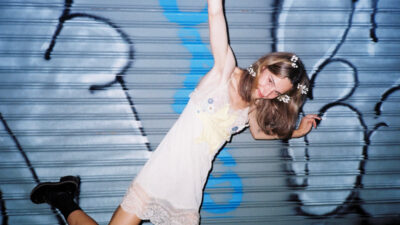
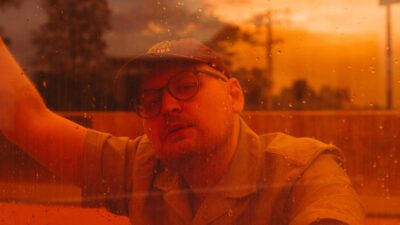
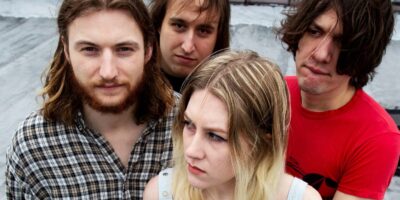
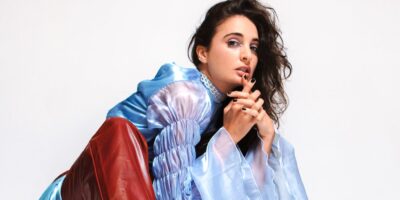
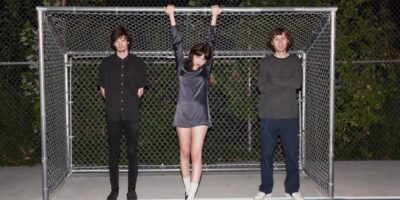
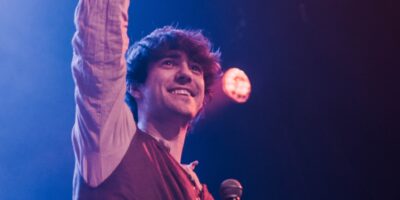
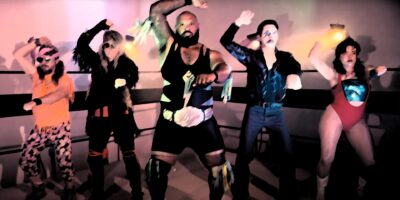
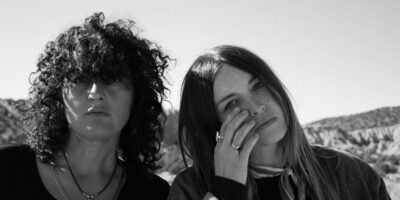
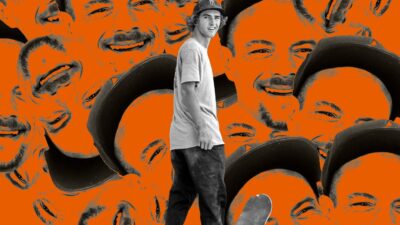


Comments